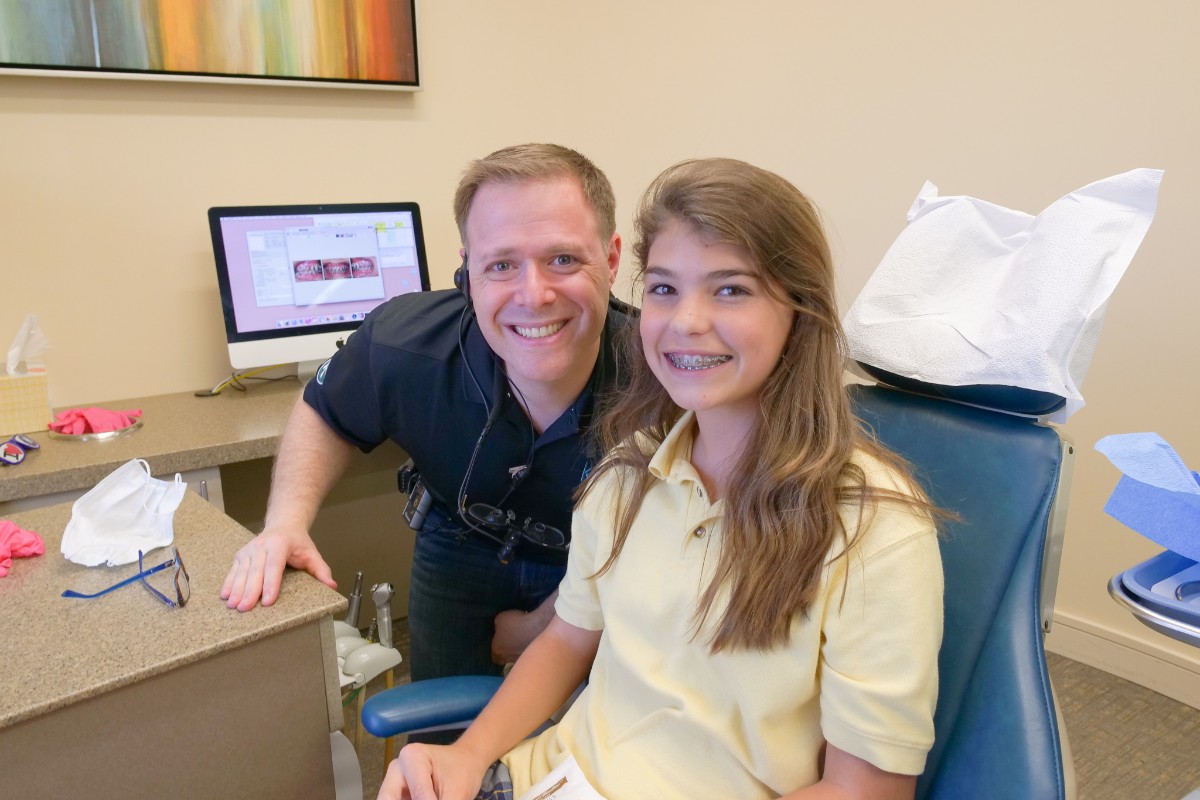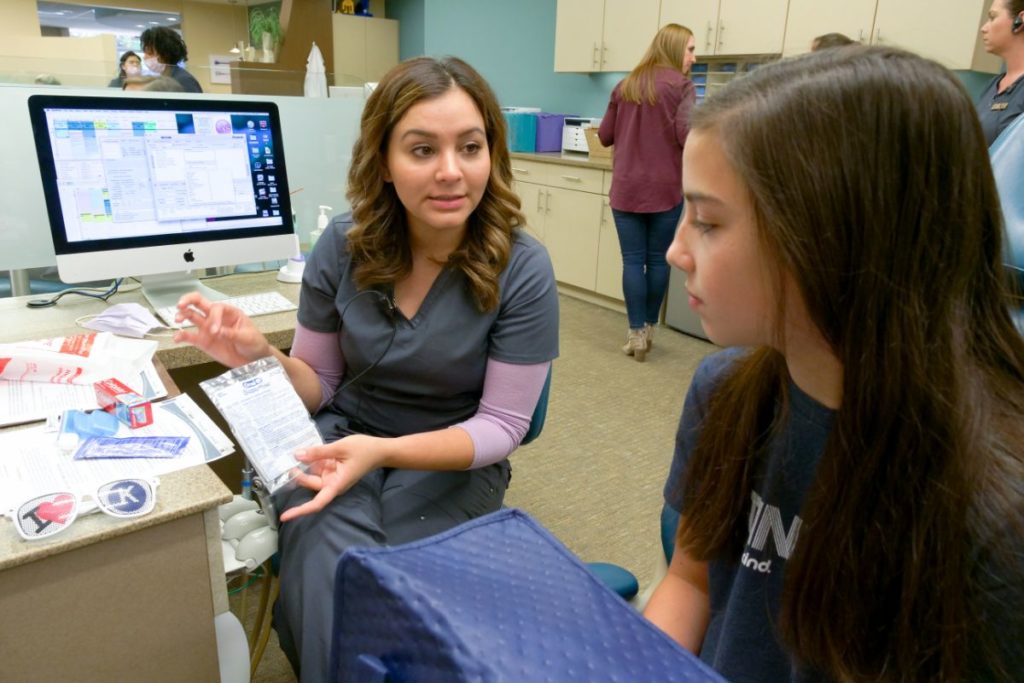
ABC’s Of Braces: All You Need To Know Before Starting Treatment
Modern orthodontics has come along in leaps and bounds in recent years, with a number of new treatment options becoming available to patients. But even with all these advances, traditional braces are still one of the best tools orthodontists have for creating straighter, healthier smiles. Not only do braces have an impressive track record when it comes to aligning teeth and jaws, they are also durable, cost efficient, and particularly useful for cases that are more severe or complicated. There’s a reason braces are the top orthodontic treatment, year after year!
If you’ve decided to move forward with braces treatment with Kaplan Orthodontics, it can be an exciting time. You’re setting out on a journey that will lead to improved oral health and give you a better smile, after all! It’s common to still have some questions and concerns, though, and that’s why we’ve created this guide. We want you to feel confident in the choice you’ve made and the trust you’ve placed in us, so we’ve put together an outline of everything you need to know before beginning orthodontic treatment. For more information on the ABC’s of braces treatment, keep reading!
What are braces made of?
To understand how braces work, it helps to understand what they’re composed of. There are several moving parts, but we’ll go over the most important ones below.
Brackets
Brackets are the part of braces that are attached directly to your teeth. They’re typically made from a mix of stainless steel, nickel, ceramic, or other high-quality materials, which makes them strong and long-lasting. They have tiny hooks or doors over which the wire is threaded, and are secured by closing the door or by applying an elastic over the top of the wire.
Glue
Tooth glue is a form of the same composite bonding material that we use for tooth-colored fillings or sealants. We use this adhesive to attach the brackets to the teeth. In some cases, we may use metal bands on the back teeth in conjunction with the glue to give braces more leverage and stability.
Wire
This thin piece of metal runs from one bracket to another. When we change the shape and curvature of the wire during the treatment process, it causes the teeth to move in the desired directions. With some patients, the wire will attach all the bottom or upper teeth together. For others, we may choose to just cut the wire strategically if connecting only a few teeth makes more sense for the treatment plan.
Elastics
Most patients will need elastics at some point in their treatment plan, but they’re essential for patients who need bite correction. Elastics are usually strung between an upper bracket hook and a lower bracket hook, pulling the upper teeth backwards to correct an overbite, or the lower teeth backwards to correct an underbite. We use rubber bands for many different situations, but they’re especially helpful when we want to bring the upper and lower teeth together successfully.
Orthodontic bands
We cement these stainless steel rings to the teeth using dental bonding agents. While they provide an anchor for braces and other orthodontic appliances, they aren’t used with all patients.
Spacers
Spacers, sometimes called separators, are small elastic “donuts” or rings that can be used to create tiny spaces in between the teeth when needed. We typically use spacers before bands are placed.
How does the treatment process work?
The customized treatment plan Dr. Kaplan creates for you includes information on how each tooth needs to be moved in order to get it in the most desirable position. He will decide how to place the brackets on your teeth based on this information. Once the brackets have been attached, the wire will be inserted. Like we talked about above, a bend in the wire is how we encourage specific and precise movements, Essentially, each bend will provide a different type of pressure on different teeth. This process of tooth movement is called remodeling, and involves minor changes in the bone that surrounds the roots of teeth.
When this kind of pressure is put on the tooth, cells called osteoblasts and osteoclasts form around the tooth’s root. The pressure of the wire works with these osteoblasts and osteoclasts to create a negative pressure on one side of the tooth. At this site, bone is removed; on the other side of the tooth, bone is reformed. This pressure and remodeling is what slowly moves each tooth into the desired position.
The remodeling process can only occur if constant pressure is put on the tooth, and once that pressure stops, the tooth will begin to settle into its new position. But over time, without consistent pressure, most teeth start to drift back to their old positions. This is why retainers are so important. We’ll provide you with one as soon as your braces come off, and as long as you wear it as directed, it will help keep your teeth in their new, improved positions and prevent any natural drifting.
Caring for your braces in the best way
Caring for your braces can come with a bit of a learning curve, but it only takes a little patience and practice to get the hang of it! As a braces patient, we recommend you brush your teeth thoroughly at least two times each day with fluoride toothpaste, especially after meals and before bed. Pay careful attention to the areas between the brackets and gums, carefully cleaning between the wires and teeth. If you have a hard time with this, try interdental brushes. They can make it easier to remove hard-to-reach plaque and food debris in the nooks and crannies created by braces.
Flossing is also an essential part of maintaining oral health, especially when you’re in braces. It should be done at least once per day, preferably before bedtime. If you find regular floss difficult to manage, try a floss threader or an oral irrigators like a Waterpik. These instruments can help remove food particles and plaque, but they shouldn’t take the place of brushing and flossing.
Food restrictions
Food restrictions can be a challenge, especially in the early days, but they are necessary to protect both your braces and your teeth. Throughout the treatment process, you’ll need to avoid anything too crunchy or too chewy. This includes things like chips, ice, gum, some raw fruits and veggies, popcorn, and many kinds of candy. While this can take some getting used to, remember that food restrictions are only temporary! All your hard work and dedication will be worth it when your braces come off and you see your beautiful new smile.
Estimated treatment times
There’s no “one size fits all” answer to how long you’ll need to be in braces. Every smile is unique and each patient responds to treatment in their own way. Other factors come into play, too, such as the severity of your issues and your overall compliance. On average, however, the active stage of orthodontic treatment can last anywhere from 6-24 months. This can be longer or shorter, of course, depending on your particular case.
Get the smile you deserve with Kaplan Orthodontics
The first step in any orthodontic journey is a consultation with an experienced orthodontist like Dr. Kaplan. At Kaplan Orthodontics, this initial consultation is free! If you’re in Dunwoody or any of the surrounding communities and want to explore what braces have to offer you, get in touch today. The smile you’ve always wanted is waiting here for you!



